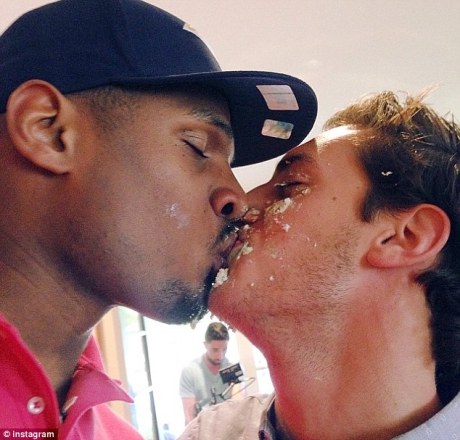
Have you noticed news publishers rapidly escalating their reporting of Tweets by anyone and everyone in the public eye? Be it a C-list celebrity or the President of the United States (the same thing by the way) everyone from CNN to your local online paper feverishly love to tell us about Joe Blow’s random Tweets.
It’s a new level of scrutiny on a very low type of communication. Tweets, especially those without links to something important, are really nothing more than brain farts. Such missives would normally smell for a few seconds then dissipate into the cosmos. Which, for the most part, is what should happen to these bits of unpleasant emissions.
But not anymore. Now a goof’s drunken reflection on current events has become a current event. When twitter blows up (at the drop of a hat) the “news” slavishly tells us about it. Call it Tweet Reporting, kissing cousin of “Fake News.” It’s not unlike telling your BFF at Starbucks, “Did you hear what so and so said the other night?” Titillating in the moment but hardly worth documenting.
In the age of social media it is completely understandable but it’s also ridiculous. Obviously, the lesson here is that folks, especially prominent ones, should be more careful before spewing their opinions into cyberspace. But Twitter, Snapchat and the rest are mostly “in the moment” phenomenon and people tend not to be at their best in the moment. Hence, the adage, count to ten before reacting to a trigger. Be it anger, fear, lust or countless other base emotions, we are always better off showing restraint. Feelings aren’t facts.
Alas, social media isn’t built for contemplation. Today’s “truths” are a narrative based on first reactions, which seldom are accurate. But once a dumbass Tweet is picked up by the media it becomes a fact. This creates a domino effect of yet more facts aka hasty reactions. And the world spins out of control. @twitter #whogivesashit
For content that matters, hit me up: https://steffanwork.wordpress.com/
Has the human race jumped the shark? Talk about a Mondo couple of days. Where to begin? Was anything more sadly horrific than watching Donald Sterling dig himself into the abyss like he did on CNN with Anderson Cooper? The clip is from Funny or Die but honestly you don’t need their overlay to be blown away. Unreal watching this decrepit bozo. He found a way to make matters worse for himself than they already are. Sterling whines: “What has Magic Johnson done to help minorities?” Geez, old man, what hasn’t he done? Later in the taping he starts blubbering because his skeevy, half-century younger-than-he-is girlfriend betrayed him. Oh, the humanity! Then the ultimate out-of-touch moment, he asks Anderson Cooper “have you ever liked a girl?” I would have laughed had my jaw not already been on the floor.
Regarding homosexual behavior, how about that videotape of Michael Sam smooching his boyfriend upon finding out he was drafted by the St. Louis Rams?
It’s a personal moment that suddenly became a national spectacle after ESPN got through with it. You would have thought he’d stuck a knife in the guy the way the network reacted. And what about the rest of us? Get a load of this ninny on a local Dallas talk show.. She’s beside herself with… Rage? Disgust? God forbid two people are happy and in love.
Speaking of rage what are we to make of that now-infamous elevator clip of Beyoncé’s less famous sister, Solange going off on Jay Z?
This, too, would be sadly horrific if it weren’t so random and weird. The security camera’s silent black and white coverage gives the whole thing a creepy found footage vibe. A squabble after a long night of partying is nothing special. Unless, of course, you’re Jay Z, Beyoncé and Solange. Watching it I actually felt sorry for these people. Perhaps the strangest part was observing Beyoncé do absolutely nothing. Regardless, soon enough the video becomes interminable. One begins to feel like a voyeur and, I should qualify, not in a good way. Again, it’s a personal moment made spectacle. And the aftermath is just beginning. Inquiring minds want to know!
In 2013, the word of the year was “selfie.” A good call. Nothing codifies our collective narcissism like a selfie. That same year, Miley Cyrus blew up the water cooler by twerking and tonguing her way into adulthood. So last year! Shit’s about as old as Dennis Rodman playing ping-pong with the dictator of North Korea. Yawn.
2014 isn’t even half over and it’s off the chain.
I will give our culture this much. It is truly united. Old, young, white, black, gay, we are all skittles in the bag -the extreme sour kind!- waiting to be devoured by the Jaws of Modern Life. Society is on an epic sugar high. Taste the f—king rainbow!
With his iconic movies fading into nostalgia, who is the John Hughes for today’s kids?
September 12, 2011

John Hughes. Don’t you forget about me…
Legendary filmmaker and former adman, John Hughes worked fast, writing scripts for many of his most famous films over feverish, coffee-fueled weekends. Most of these films (Ferris Bueller’s Day Off, The Breakfast Club, Pretty in Pink to name a few) have had a lot longer tail than such brevity would indicate, entertaining and influencing young people years after they were made.
He made other more adult-oriented films, serving as writer and director, before he died in 2009. But it is his young people movies I’d like to talk about. The above-mentioned films totally captured the teen zeitgeist in the late eighties, dramatizing the humor and pain of adolescence. Hughes’ use of music, the actors he cast and the heartfelt stories just nailed it.
My question: Who’s the John Hughes for today’s adolescent moviegoer? I couldn’t think of anyone making films today (writer or director) who makes movies of consequence for young people.
There’s Harry Potter, Twilight and oodles of animated movies. But as wonderful as some (not all) of these are, none are based on anything close to resembling the real world.

Cast from The Breakfast Club. Funny without being cartoons.
I’m not sure if that’s good or bad or even if it really matters but I do think it’s sad that kids have only cartoons and fantasies in which to relate to. It’s the same on TV, unless you think iCarly, Wizards of Waverly Place or Hannah Montana resembles life around your house.
Why is there such a void? Is it that no one in Hollywood thinks drama-comedies based on real life will sell or that kids in America won’t see them? If so, what does that say about today’s moviemakers…and us?
Quantifying fame in the age of You Tube, Facebook and Klout.
September 6, 2011
At a restaurant the other day I overheard a woman paraphrase the famous (pun intended) Andy Warhol quote, “In the future, everyone will be world-famous for 15 minutes.” She was referring to a video her son recently posted on You Tube. She told her rapt friends it had “hundreds of views!” For her, and likely her boy, that meant fame.
But is that what Andy Warhol meant? Yes and no. Remember, he was looking at fame through the lens of mass media. Warhol and his Factory defined popular culture, essentially creating it. Before him fame through art (be it painting, literature, photography or films) was the providence of a precious few, those who earned it via talents and/or exquisite connections. After him, fame could mean anything from getting a bad haircut to getting arrested.
I’m not going to belabor the obvious. The Internet and social media have made getting famous a whole lot easier for the rest of us. Andy was a prophet.
And yet.
In a world where everyone and their teenaged sons are famous for a few minutes, what exactly does “fame” mean? Is there a certain number of views, likes and followers that deliver one into fame? Surely, it’s more than several hundred. But gaining even one hundred thousand friends can’t equal the popularity of most reality TV stars. And, in turn, can one honestly compare a Real Housewife with, say, Audrey Hepburn or Jack Nickolson?
My point: The beanstalk to fame grows ever higher… until one finally reaches the V-V-VIP lounge, where George Clooney plays ping-pong with Justin Bieber and Megan Fox does Merrill Streep’s hair. Oh yeah, and they’re naked and spray painted gold!
Joe the Plumber (remember him?) or some opera-singing five-year old can’t possibly belong there. Or do they? After all, aren’t those the knuckleheads Andy Warhol was talking about? And wasn’t Justin Bieber just a kid on You Tube? Silly stuff I know.
Here’s a more interesting question: If everyone is famous (even for just 15 minutes) then how can fame even exist? By definition don’t we need way more un-famous people in order to appreciate the famous ones? Remember your Dr. Seuss: When all the Sneetches finally got stars on their bellies the stars lost all their meaning.
Back in the day my old man said his 15 minutes came when the Wall Street Journal rendered his portrait in iconic black dots. That trumped merely just getting his picture in the paper, which, by the way, used to be the quintessential determiner of fame.
I recently read a blog post talking about “access” as being the new standard for wealth. In other words, one doesn’t need to own things in order to be considered wealthy -just have access to them.
So what’s the new yardstick for measuring fame?
For those of us still on the ground floor, here’s an interesting article on gaining Klout.

Yearning for what came before…
Retromania is the title of a new book by Simon Reynolds. I haven’t read it but it’s about “pop culture’s addiction to it’s own past.” Indeed, most new pop music does seem awfully familiar. Like a lot of people over 30, the first time I heard Lady Ga Ga’s “Born this Way” I immediately thought of Madonna. Looking at her does nothing to dispel the notion. What’s going on? By definition isn’t “pop” supposed to explode…out of nowhere?
I’ll never forget something my former creative partner, Mark Faulkner once told me in regard to his preference for modern architecture over older forms: “Why would anyone want to live in the past?”
It’s a good question (and one pertaining to far more than living arrangements). And the answer is a lot of us. The other day I read a story in the Chicago Tribune (the paper version) about four different area trend setters who make their hay on antiquated, lo-fi technology: buttons, magazines, cassettes and vinyl recordings. Trendsetters living in the past…

Owen Wilson pining for a “Movable Feast.”
The surprise sleeper movie of the summer is Woody Allen’s Midnight in Paris, a love letter to Paris but also to the recent past, in this case the Paris of Hemingway and Gertrude Stein. The main character in the movie, played by Owen Wilson, is a jaded screenwriter who yearns for a more romantic time in the most romantic city in the world. He wants to uproot his highly lucrative career in Hollywood (writing crappy blockbuster movies) and move to Paris, where he might finish his novel (not screenplay) about the caretaker of a nostalgia shop. There are layers and layers of “oldness” in the synopsis alone! Woody Allen, by way of his protagonist, pines for the “good old days,” or as Michael Kammen put it “history without guilt.”
This is not the first time Woody Allen has explored better times (Zelig) and it won’t be the last. Allen adores the past. And so do we. Though the contemporary (and mostly unfortunate) trend of reality TV is manifest, many of us make special exceptions for shows like Mad Men and Boardwalk Empire. The clothes were better. The sex was better. Men were men and women were women. And so on…
Nostalgia makes us feel good. And the examples are everywhere. I myself live in a renovated Victorian home. Unlike my former partner, I like the feel of old wood and the way the sun looks coming through a stained glass window. Parked on the street out front are Ford Mustangs, Dodge Challengers and Chevy Camaros; all cars that experienced halcyon days decades ago but are now back with a vengeance.

2011 Dodge Challenger (8-track not included)
The first blockbuster movie of the summer: Super 8.
In marketing parlance, we sometimes call this “retro chic.” At least that’s the phrase I used when talking about campaigns we did for Altoids and Johnny Walker. For GM, I wrote: “This is the new generation of Olds.”
Fetishizing the past for commercial purposes is big business. Fashion mines the 60’s and 70’s for its bold prints and collar shapes. A perfect pair of imperfect Levis can cost several thousand dollars. We all have and wear favorite tee shirts emblazoned with logos and messages from the recent past. Seeing us an alien might think Led Zeppelin and Adidas were modern things. And the alien would be right…sort of.

Adidas, more trendy than ever…
This could easily turn into a college dissertation. As a matter of fact here’s an excellent essay on the topic from the University of Virginia.











 The Happy Soul Industry
The Happy Soul Industry The Last Generation
The Last Generation